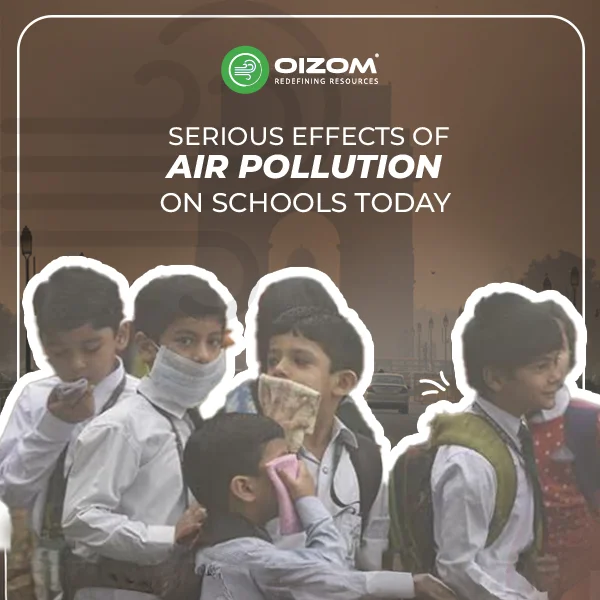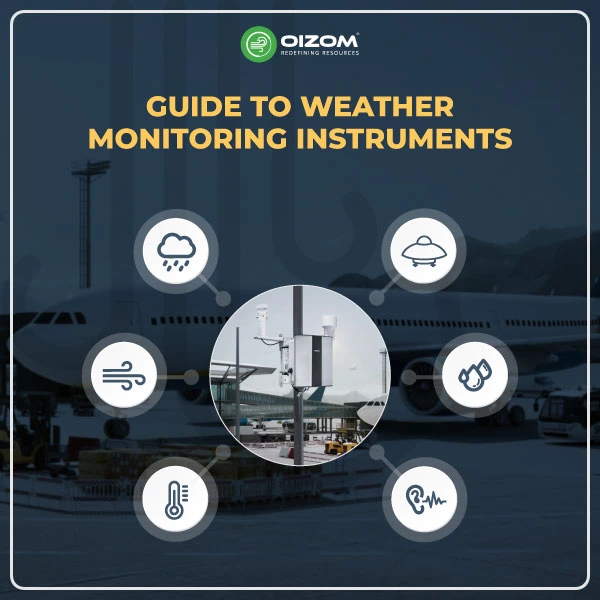Summary
Air pollution in schools is an overlooked yet serious issue that directly affects children’s health and learning outcomes. Pollutants from traffic, construction, and poor indoor ventilation can lead to respiratory illnesses, fatigue, and reduced concentration. These impacts not only harm student well-being but also compromise academic performance. Addressing this challenge requires both preventive measures, such as better building design and ventilation, and active solutions, like real-time air quality monitoring. By tracking pollutants and ensuring safer indoor environments, schools can create healthier learning spaces and protect the long-term well-being of students and staff alike.
Serious Effects of Air Pollution on Schools Today
One concern that consistently makes headlines is air pollution. This alarming concern within the context of educational institutions becomes crucial, as children, being more susceptible, can face various health challenges. Schools are not just centres for education but also places where children spend a significant portion of their time. Air pollution in schools encompasses pollutants present in both indoor and outdoor environments where children study, play, and engage in activities. It includes a range of contaminants, from dust and mould to harmful gases like carbon monoxide.
Therefore, ensuring air quality within these premises is paramount. The following article explores the complexities of air pollution within schools and how air quality monitors can help address this issue.
Why Is School Air So Bad?
Schools are supposed to be safe spaces for learning, but the air inside and around them often tells a different story. A mix of indoor and outdoor pollutants can quietly build up in classrooms, hallways, and playgrounds, creating an environment that’s far from healthy for children and staff. From outdated infrastructure to everyday school supplies, multiple hidden sources contribute to poor air quality. Here are some of the key culprits:
Volatile Organic Compounds (VOCs):
- Source: Paints, cleaning agents, adhesives, markers, and other office supplies.
- Effects: Can cause headaches, nausea, and dizziness. Long-term exposure may lead to liver damage.
Particulate Matter (PM):
- Source: Dust from chalk, vehicle emissions, construction activities, and nearby industrial areas.
- Effects: Respiratory problems and lung damage can exacerbate existing health conditions, such as asthma.
Mould and Mildew:
- Source: Damp or humid areas, poor ventilation, water leaks.
- Effects: Respiratory issues, skin irritation, and allergic reactions may occur.
Asbestos:
- Source: Older school buildings, insulation materials, and ceiling tiles.
- Effects: Long-term exposure can lead to lung diseases, including asbestosis and mesothelioma.
Lead:
- Sources include lead-based paints, contaminated water pipes, and older building materials.
- Effects: Developmental delays, learning difficulties, and various physical health problems in children.
Carbon Monoxide (CO):
- Source: Vehicle exhaust, faulty heating equipment, nearby roads with heavy traffic.
- Effects: Headaches, dizziness, fatigue, and high levels can be fatal.
Nitrogen Dioxide (NO2):
- Source: Vehicle emissions, gas stoves, heating systems.
- Effects: Respiratory irritations, reduced lung function, chronic bronchitis.
Radon:
- Source: Natural decay of uranium in soil, rock, and water seeping into buildings.
- Effects: Long-term exposure is the second leading cause of lung cancer.
Ozone (O3):
- Source: Photocopiers, printers, and outdoor smog infiltrating indoors.
- Effects: Respiratory problems, headaches, fatigue.
Formaldehyde:
- Source: Plywood, fiberboard, glues, adhesives.
- Effects: Irritation of the eyes, nose, throat, and potential carcinogen with prolonged exposure.
Pesticides:
- Source: Pest control activities, garden and lawn care.
- Effects: Nausea, dizziness, and respiratory problems can occur with long-term exposure, potentially affecting the nervous system.
Polychlorinated Biphenyls (PCBs):
- Source: Older electrical equipment, fluorescent light ballasts.
- Effects: Immune system suppression, developmental issues, and a potential carcinogen.
Second-hand Tobacco Smoke:
- Source: Smoking near school premises.
- Effects: Respiratory infections, asthma, and sudden infant death syndrome (SIDS) in very young children.
Vehicle Emissions Near Schools:
- Sources: Cars, buses, and trucks are often found near school entrances and bus stops.
- Effects: Asthma, decreased lung function, and respiratory diseases.
Understanding and addressing the sources of these pollutants is vital for the health and well-being of both students and staff in schools. Through a combination of proper ventilation, regular monitoring, and mindful selection of materials and practices, schools can significantly reduce these pollutants and create a healthier learning environment.
Health Impacts on Students and Staff
The consequences of air pollution in schools are vast and not limited to the health and well-being of students and school staff. These consequences can seep into various areas of education, well-being, and community health as a whole. Here’s a comprehensive overview:
1. Impact on Students' Health and Well-Being:
Respiratory Problems: Prolonged exposure to pollutants can cause or intensify asthma, allergies, and other breathing ailments.
Cognitive Impairment: Studies have linked air pollution to diminished cognitive functions, compromising learning abilities.
Chronic Health Conditions: Constant exposure to pollutants has the potential to lead to chronic health problems, such as heart disease, in later years.
2. Impact on Academic Performance:
Reduced Concentration: Poor air quality can cause drowsiness and reduced concentration, thereby affecting students’ performance in the classroom.
Increased Absenteeism: Students exposed to health problems caused by air pollution are more likely to be absent, which can negatively impact their academic performance.
3. Teachers and Staff Impacts:
Health Problems: Like students, staff members can experience a range of health issues, from headaches and fatigue to more severe problems.
Decreased Productivity: Illness, such as health discomfort caused by poor air quality, can reduce the productivity and morale of teachers and staff members.
4. Economic Impact:
Healthcare Expenditures: More illnesses translate to greater healthcare expenses for families and potentially the community.
Maintenance Expenses of Buildings: Schools may need to allocate funds for maintenance and improvements to address air quality issues, which can impact budgets.
5. Social and Community Implications:
Disparities: Schools in areas with higher pollution or limited resources may be disproportionately affected, thereby reinforcing existing social inequality.
Community Health Issues: The same toxins that impact schools can lead to widespread health issues in the community.
6. Psychological Impact:
Anxiety and Stress: Concern regarding air quality and well-being could translate into more stress and anxiety among students, parents, and teachers.
Impact on Learning Environment: A substandard physical environment can negatively influence the overall climate of the school, resulting in a less stimulating learning environment.
7. Legal and Regulatory Issues:
Compliance Problems: Schools must comply with specific air quality specifications frequently, and failure to do so will result in legal and regulatory issues.
Reputation Risk: Routine air quality issues can harm a school’s reputation, negatively impacting enrollment and community support.
Academic and Cognitive Effects
Air pollution in schools isn’t only a health risk, but it also directly affects the way children think, learn, and perform at school. Even brief exposure to pollutants like PM2.5, CO2 (resulting from inadequate ventilation), and volatile organic compounds can cause headaches, fatigue, and reduced concentration among children. This commonly presents as slower reading, difficulty concentrating, and a decline in problem-solving skills.
The long-term effects are even worse. As kids’ brains are still evolving, they are highly susceptible to neurotoxic pollutants such as lead, ozone, and nitrogen dioxide. Studies have shown that long-term exposure to poor air quality can impair memory, reduce cognitive flexibility, and hinder overall academic progress. For instance, research has shown that students exposed to higher amounts of fine particulate matter (PM2.5) performed lower on standardized tests, highlighting the connection between air quality and academic performance.
These scholastic losses don’t remain confined to the classroom; they can impact prospects by affecting cognitive development during the formative years of learning. It is essential to acknowledge and mitigate these risks, enabling children to learn within an environment that fosters both their physical and mental well-being and potential.
The Role of Location in School Air Quality
The location of a school significantly influences the quality of air children inhale daily. Schools located near highways, intersections, or industrial areas are typically exposed to higher levels of pollutants, including nitrogen dioxide, carbon monoxide, and fine particle matter, from automobile exhaust and industrial effluents. These locations are prone to concentrated amounts of harmful gases and particles that can easily enter classrooms and playgrounds.
Even within the same city, there can be significant variations in air quality. Urban schools often have more concerns due to traffic and construction in their vicinity. Still, rural schools frequently enjoy cleaner environments, which can be compromised by dust, agricultural chemicals, or smoke from burning.
Indoor conditions also play a role. Rooms near bus stops, parking lots, or low-ventilation rooms are likely to have high concentrations of carbon dioxide, fumes, and particles. Similarly, playgrounds or playing fields located near major roads expose students to higher levels of pollution while they are outdoors.
By recognizing how external environments and internal space planning impact the quality of the air, it becomes apparent that location is not only a geographical specificity but a vital component that controls the health and learning environment for children.
How Schools Can Improve Their Air Quality?
Air quality monitoring in schools requires a multifaceted approach, combining technology, expertise, and consistent practices. Implementing effective strategies can significantly improve the learning environment. Here’s a guide to achieving this goal:

1. Implementing Effective Air Quality Monitoring Systems:
- Adopting Modern Technology: Using advanced sensors and devices to measure various pollutants in real-time.
- Integrating with School Infrastructure: Ensuring that monitoring systems work seamlessly with existing HVAC and building management systems.
- Utilizing Experts and Organizations: Collaborating with organizations like Oizom, that specialize in air quality monitoring, to design and implement systems tailored to each school’s needs.
2. Identifying Key Pollutants and Establishing Monitoring Protocols:
- Identifying Specific Pollutants: Recognizing the particular pollutants that are relevant to the school’s location and activities.
- Creating Monitoring Protocols: Developing clear guidelines and schedules for regular monitoring and reporting.
3. Integrating Real-Time Air Quality Data and Feedback Mechanisms:
- Real-Time Monitoring: Utilising technology that provides immediate feedback on air quality levels.
- Responsive Actions: Creating mechanisms to respond quickly to changes in air quality, such as adjusting ventilation systems.
4. Collaborating with Experts and Organizations in the Field of Air Quality Monitoring:
- Working with Specialists: Engaging experts in air quality to guide and assist in monitoring efforts.
- Partnering with Companies like Oizom: Utilizing specialized services and products designed to monitor and improve air quality in educational settings.
Solutions and Mitigation Measures
Air quality monitoring is only the first step. Practical solutions and mitigation measures are essential for addressing any issues uncovered through monitoring. Below are strategies to enhance air quality in schools:
1. Implementing Measures to Reduce Air Pollution in Schools:
- Reducing Sources of Pollution: Identifying and minimizing sources of pollution involves actions such as switching to non-toxic cleaning products and controlling vehicle emissions near the school.
- Promoting Clean Energy: Using clean energy sources to reduce emissions from heating and cooling systems.
2. Adequate Ventilation Systems and Air Filtration Techniques:
- Enhancing Ventilation: Ensuring that fresh air circulates effectively throughout the school.
- Implementing Air Filtration: Utilizing modern filtration techniques to remove pollutants from indoor air.
3. Promoting Awareness and Education on the Importance of Clean Air:
- Educating Students and Staff: Providing information about air quality and its impact on health and learning.
- Engaging the Community: Involving Parents and Community Members in Air Quality Efforts.
4. Policy Recommendations for Improving Air Quality in Educational Settings:
- Advocating for Strong Regulations: Working with local and national authorities to strengthen air quality standards.
- Developing School Policies: Creating clear, enforceable policies within the school to maintain air quality.
Conclusion:
Air quality monitoring and management in schools are vital tasks that require careful planning, implementation, and ongoing commitment. Schools can create a healthy and productive learning environment by adopting modern strategies and technologies, such as those provided by Oizom. To learn more about how Oizom’s air quality monitoring systems can be tailored to meet your school’s needs, visit Oizom’s website or contact our expert team today. Together, we can ensure the well-being of our children, staff, and communities, providing a foundation for a successful educational experience.






